Old motorcycles, like old cars, are probably going to experience a resurgence in interest as people become interested in low-cost transportation again.
There may be even more interest in old bikes because they’re lower-cost, both to buy and to maintain.
Plus, to feed.
Gas is cheap now, but that may change. Not because of scarcity but more likely because of surplus . . . of money. The excess printing of which will result in needing more money to buy the same things, like gas. When a gallon of regular unleaded costs $5 six months from now, being able to travel 50 miles on it – something most bikes can do – will also be of great interest to lots of people.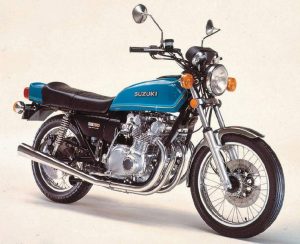
Old bikes are also fun – which we could use after months of being “locked down,” which isn’t.
Where to start?
You might begin by looking around for a ‘70s-era Universal Japanese Motorcycle (UJM) like a Honda CB750/550 Kawasaki KZ series or a Suzuki GS. These UJMs – so called because they’re all similar in basic layout – are attractive because they were among the first vehicles to be everyday reliable and low-maintenance in the way that modern cars are expected to be.
They were decades ahead of cars in this respect – which is why they still feel modern, today.
Powerful, too.
The Japanese bikes of the ’70s pioneered the overhead cam/aluminum in-line four-cylinder engine (CB750) and then the dual overhead cam in-line aluminum four cylinder engine (Z1900). These bikes were – and are – not only capable of very high speeds but also had very long legs. It is not a crazy idea to ride a 40-year-old UJM across the country because you’ll get there.
You don’t even have to go back to the ’70s to get that experience – and the rest.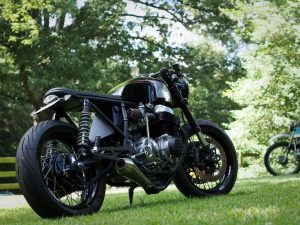
Most bikes made through the ’90s were still made like the bikes of the ’70s in that – unlike the cars of the ’90s – they were not fuel-injected and didn’t have computers.
As basically mechanical things rather than electronic things, they were and still can be maintained with wrenches and screwdrivers rather than . . . computers. Which made them easier to fix yourself.
Which made you more independent, both financially and actually. This will become important again in the post-Corona future.
With a caveat.
You’ll need to master lost arts such as cleaning and adjusting carburetors – a bike with an in-line four will have four of them – and (if the bike is ’70s vintage) cleaning and adjusting ignition points. Neither is difficult to do and special tools aren’t – for the most part – required. But it’s been 20-plus years now since most bikes came with carbs – and without computers – and 40 or more since most bikes came with points, so there will be a learning curve for those who have never dealt with either.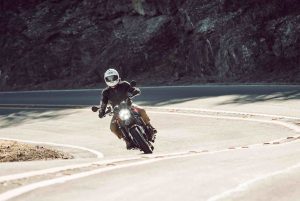
Which is most people who weren’t of riding age when these bikes were new.
They are used to getting on the bike, pushing a button – and riding. Modern bikes don’t even have chokes. But when the bike stops running – or isn’t running right, it gets hauled to the dealer.
Because he has the computer.
But in the post-Corona world, there may be no dealers left to get the modern bike running again – and even if there are, many will no longer be able to afford the dealer.
Especially the older air-cooled UJM stuff, with the engine hanging in the breeze, accessibly. The spark plugs are there. So are the carbs, which can be removed – by you – in just a few minutes with nothing more elaborate than some open-end wrenches and the gumption to have at it. Take them off, clean and reinstall. Adjust the idle by turning a screw. The mixture by swapping a clip – or a jet.
It isn’t hard to do – especially if you can read a service manual and have the patience to follow the instructions.
Which does not require a computer.
There’s no ABS, so no wheel speed sensors or catalytic converters, either – all the way into the late ’90s. Some bikes were free of such modern encumbrances until the early 2000s.
If the bike is air-cooled, it won’t have a radiator, water pump or hoses. Which means it will never leak water and overheating will only be an issue if you run the thing low on oil or run it too hard, both avoidable.
The oil itself will cost you less, too. Most bikes take between 3-4 quarts and some of the smaller cc bikes need only a quart or so – vs. the usual 5-6 for most cars. Tires are another thing you’ll spend less on, since there are only two of them – and both are cheaper (generally) than car tires – though they don’t last as long. Still, you’ll have more money in your pocket – which matters when the government takes away your ability to earn it.
But the main payoff is psychological. A bike will make you feel alive again and thus counteract the concerted efforts of the Fear Peddlers to make you feel that death is everywhere.
Hold the front wheel with your left grip; use your right to feed throttle until the rear breaks traction. Let ‘er rip – then let off the brakes and leave a streak of rubber 50 yards long, suffused in smoke for the Fear Maskers to huff.
And that’ll make you feel great!
. . .
Got a question about cars, Libertarian politics – or anything else? Click on the “ask Eric” link and send ’em in!
If you like what you’ve found here please consider supporting EPautos.
We depend on you to keep the wheels turning!
Our donate button is here.
If you prefer not to use PayPal, our mailing address is:
EPautos
721 Hummingbird Lane SE
Copper Hill, VA 24079
PS: Get an EPautos magnet or sticker or coaster in return for a $20 or more one-time donation or a $10 or more monthly recurring donation. (Please be sure to tell us you want a magnet or sticker or coaster – and also, provide an address, so we know where to mail the thing!)
If you’d like an ear tag – custom made! – just ask and it will be delivered.
My latest eBook is also available for your favorite price – free! Click here. If that fails, email me at [email protected] and I will send you a copy directly!


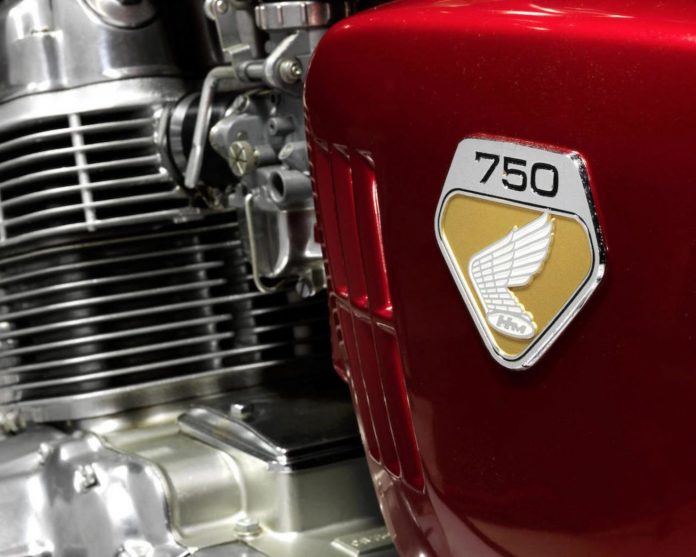

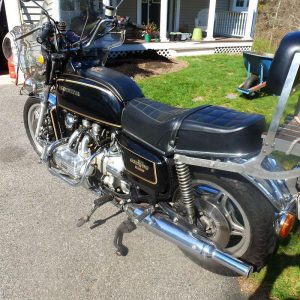







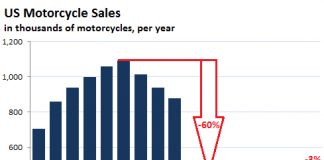
Thanks for sharing your thoughts about joker123 net.
Regards
Eric,
Bikes with points aren’t hard to deal with. The points will likely live under a cover atop one of the outboard cylinders. If a bike is old enough to have points, it’s old enough to have a kick starter too. Just use the kicker to rotate the points’ cam around, loosen the set screws, gap ’em, and lock ’em down. That’s all there is to it! It’s an easy peasy task… 🙂
I know, Mark – because I have bikes with points!
Still, I converted one of them – my ’76 Kz900 – to a transistorized system that is maintenance free and has worked perfectly for years. This 45-year-old bike is as reliable and daily-ridable as anything new and in some ways, more so!
I had guy show me how to do my points; my first bike, a Yamaha XS400, had ’em. He told me to rotate the cam with the kicker, and the gap #. He said that, in a pinch, I could use a matchbook cover to set ’em. He then said that, if you don’t have a matchbook, no biggie. He said set ’em till they look about right; if it runs, don’t worry about it! That little saved me on a road trip, because I had to reset them.
So, what do you think of bikes that have ECUs, EFI, and a catalytic converter? Should I get an extra ECU just in case?
If I were looking for a simple, reliable bike, I’d probably go with a dual sport like a Kawi KLR650 or Suzuki DR650.
As if Americans aren’t catching on this pandemic was pre-planned from the beginning (see CDC advertisement for quarantine managers in November of 2019).
https://jobs.cdc.gov/job/dallas/public-health-advisor-quarantine-program/250/14136286
I wound up getting a relatively new Harley last year that I dearly love to ride. Beautiful, very responsive, powerful, and customized to my liking. But I just can’t bring myself to get rid of my 2003 Honda VTX 1300S. It’s all cable, carburetor, with choke analog speedo and nothing I can’t work on. She’s ratted out and no beauty, but man I swear I could ride that thing to the moon and back, and fix it myself if anything broke on the way.
The Softail, on the other hand… I installed a device that lets me adjust the fuel via flash bluetooth connection. Very odd, to say the least.
Hi Bill,
My ’76 Kz900 is like your VTX. I’ve had the thing for decades and it is so solid I would not hesitate to ride it across country… well, except that doing so would get it dirty!
Or, better yet, ride a bicycle.
Be sure to get the factory service manual, tools, patience and the blog links for the old girl that lights your visual love. A newbie ripping 4-in-line carbs off to dismember, reassemble and sync properly is a scary thought. Maybe stick with the singles and twins at first.
This is very good advice. Actually HD Sportsters before the fuel injection (I think that was 2005?) are very robust mechanically. One carburetor, belt drive, wet clutch pack, and the ignition is simply a crank position sensor into a black box which has the spark advance look up table. (e.g. advance vs rpm). Ignition system also has a vacuum operated switch off the carb that picks one of two advance curves.
Just to show how deep the Corona fear runs even here in Alaska: at the grocery store I work at, I’ve never had as many thanks and approvals as I did today… because I was sanitizing carts all day. One man even said he would find my boss and tell him I needed a raise.
I try to warn someone that the hamburger chubs they picked have blood caked on, they think I’m “insulting your groceries” and complain to the manager. I hose down all the carts with a sanitizer of questionable potency but certifiable nastiness (it’s called Kayquat, in case anyone is familiar), suddenly I’m a hero and you’re asking them to pay me more.
The world has gone crazy.
Hi Chuck,
People – not all, but many – have literally been driven insane with fear. Not merely of Corona. Of everything. It has been a work in progress; it took more than 30 years. But now it’s borne fruit, voila.
I can remember before all this. Before the Safety Cult metastasized into the national religion it’s become. For those old enough to remember the pre-SC days, we are living in a hallucinatory era in which pathological risk-aversion has become normalized, even worshipped as the ultimate virtue.
Think about how much of the past is slowly falling into myth because people can’t even conceptualize doing it any longer because of the safety cult.
People already talk about the mid-1990s, when two airbags and leather upholstery were considered luxurious, as if they were discussing some quaint, primitive barbarian civilization from long ago and far away. “Wait, you mean there was a time when not every car had 7 airbags and a luxury interior?”
I could imagine some dildo in the future saying “Wait a minute! People actually went outside to have fun? That’s dangerous!”.
Hi Bluegrey,
I can more than imagine it. I can remember when almost no one “buckled up for safety” and most bikers rode without helmets and kids played outside all day, unsupervised and their parents didn’t flip out about it. Your generation go screwed out of all of that by the Safety Cult. Your generation’s kids may get it back.
Maybe.
Fun fact: this entire panic started with a hilariously buggy computer model (oh, how I love those!) which was the work of the same British “researcher” who got everyone freaked out about Mad Cow Disease back in 2001 and Bird Flu in 2005. I would say he needs his research license revoked (because in Englandland you probably do need a license to do research!) but honestly, he seems like a fairly accurate barometer of how thoroughly the populace has been conditioned to react out of fear – which is much more today than even 15 years ago.
Guys like that are funded and moved up because the results they come up with are useful to their masters. This guy knew his models were full of shit. He broke the lockdown rules himself. If he honestly believed his own work that this was a dead contagious disease to otherwise healthy people of working age he wouldn’t dare have his married lover over to exchange bodily fluids.
Many of the older bikes also have stone reliable electronic ignition systems available from the aftermarket which eliminates one maintenance headache,setting 2 sets of points by gap and or rotating the mounting plate can be an exercise in frustration.Depending on when built can also convert cast wheels to tubeless and get rid of another hassle.You never want a tube failure at speed and if you have it is an unforgettable moment in your riding career!
Just on the rear tires, Eric, how are they and the wheel removed from the bike to change or repair the tire?
Specifics depend on the bike, but on every one I’ve ever worked on (dozens over 40 years) you remove the axle (Usually remove the nut and then wiggle the axle to the non-threaded side until it’s out. If it’s shaft drive, there will be a little finagling to work the wheel over the drive splines. If it’s chain drive, loosen the chain tensioners, drop the chain off the sprocket, and drop the wheel off. It’s designed to be easy by the side of a road.
If it’s an older bike a fair amount of penetrating oil may be in order…
Hi To5,
What Ernie said – usually, there’s an axle bolt that goes through the wheel hub. But, first you should raise the rear of the bike, as via the center stand. Some bikes don’t have them and in that case, use a rear support that fits under the swingarm, etc. You will also need to back off the wheel adjusters to let the chain slip off the sprocket. None of this is hard and once you get to know your bike, it’s a 15 minute or so job.
Even better, get a Honda or another bike with a single sided swing arm (SSSA). My 1991 Hawk GT has a rear wheel I can get off in a couple minutes. I uncap a nut, take out the cotter pin, stand on the rear brake and loosen the big bit, then it’s just a matter of sneaking it through the gap between the exhaust and the frame. All made easy by the center stand!
I needed a rubber mallet to knock the axle bolt out of my W650. After that, pulling the rear wheel was easy…
1980 Honda 750F in silver. Man, I miss that bike.